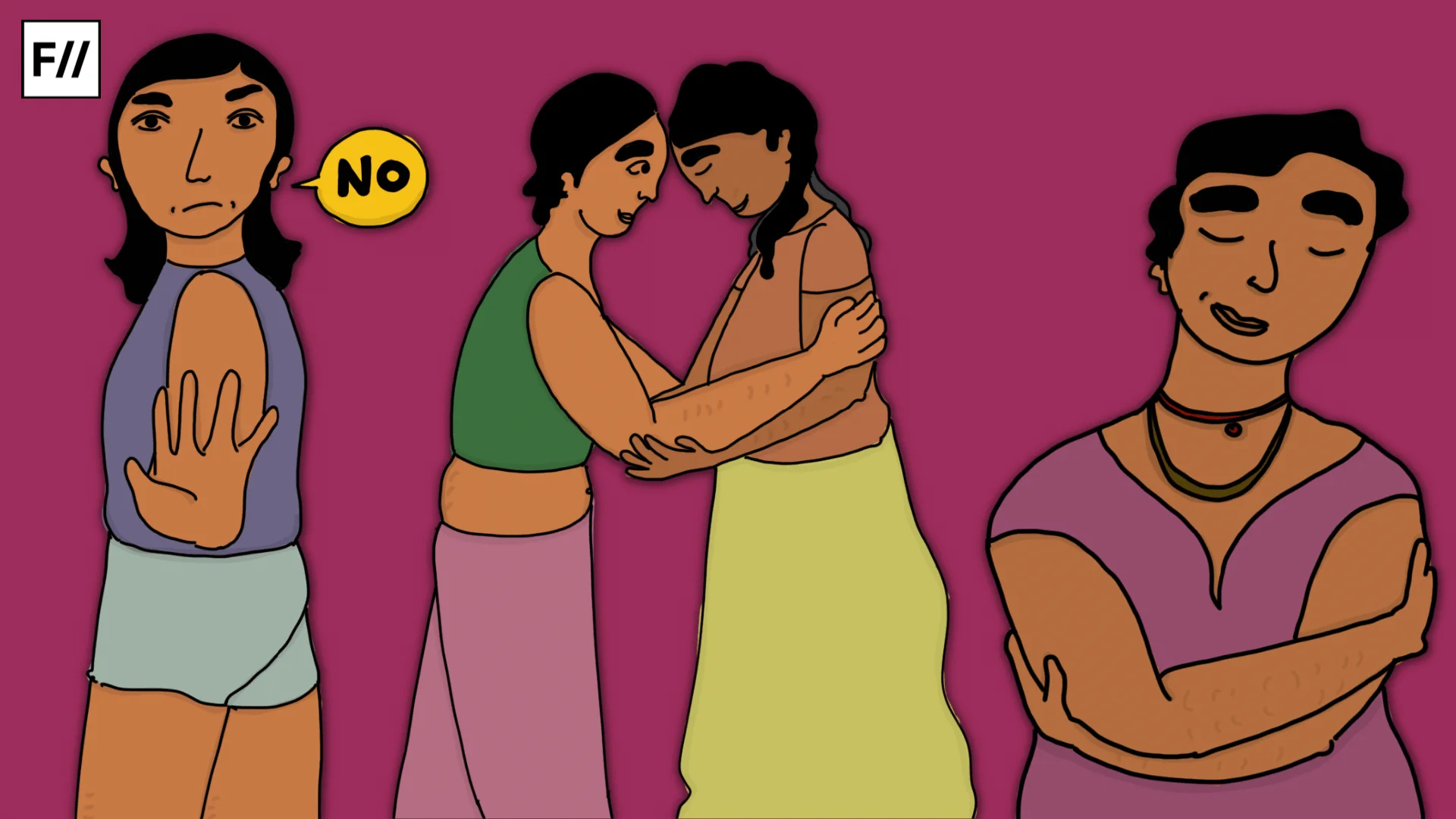Sex-positive feminism has mostly received a bad rap for being a heavily debated and misinterpreted identity. There is often a subjective understanding of the topic which in turn encourages polarization between those who identify as sex-positive feminists and those who don’t.
There is an overall dearth of unbiased information towards the movement, which makes it even more difficult to approach. So what exactly is the 101 on sex-positive feminism and would you identify as one?
Below is a brief breakdown of what is the essential interpretation of sex-positive feminism. For ease of understanding, this is done with respect to the three broad terms that the movement heavily interacts with – autonomy, consent and gender.
Sex-positivity and autonomy
There is no set, singular definition of what sex-positive feminism is. However, there is a general set of principles that most sex-positive feminists believe in and adhere to. Sex-positive feminists usually use the term to be identified as someone who has full autonomy over their sexuality.
Regulations and/or restrictions on sexual freedom, be it by the government, (wo)men, other feminists, opponents of feminism or any other organization/institution are reprimanded in this movement. When it comes to sexual orientation, activity and engagement, sex-positive feminism is driven by the key terms of “personal freedom” and “choice”.
Sex-positive feminists use the term to identify as someone who has full autonomy over their sexuality.
Sex-positivity and consent
The whole sex positive movement and sex-positive feminists believe that wanting to (or not wanting to) engage in any and all kinds of sexual intercourse is okay as long there are provisions for consent and safety. This includes but is not limited to participation in casual sex, having multiple, consenting sexual partners, not having any sexual partners, being asexual, being demisexual and everything else on the spectrum.
However, key points to take notice of, which are also underlying agreements in all these engagements are that they have to be “mutually consensual, physically and psychologically healthy and safe“. But of course, these terms are applied to what the theoretical understanding of sex-positive feminism is supposed to be. Real life experiences come with their own burden of caution.
Sex positivity as an ideology contests rape culture. It goes against the notion of “prudes and tramps” i.e. typecasting women who are sexually active by saying that they are always open to indulging in sex and/or are promiscuous. Instead, the movement gives wriggle room for people to be fluid with their sexuality, sexual explorations and not be typecast in accordance with popular, inappropriate tropes.
Sex-positive feminism and gender
Sexual freedom for sex-positive feminists is closely interlinked with their gender, views on gender identity and self-image. Sex-positive feminists do not operate on the basis of the gender binary and instead embrace the whole spectrum of human gender and sexuality. When it comes to gender ideologies, sex-positivists reject two ideas at their core – male vilification and sexual essentialism.
Male vilification is the notion that (traditionally heteronormative) male sexuality is often brutish, aggressive, insatiable and a testosterone-fuelled rampage. This is often drawn as a contrast to the pure, chaste and domesticated form of sexuality that we usually associate with women.
Also Read: No Female Agency In The Female Orgasm. Thanks Pop Culture!
Sex-positive feminism holds all genders on an equal and objective ground and treats their desires (or lack thereof) the same way. The trope of “man-hating feminist” is debunked in sex-positive feminism. Respectively, sexual essentialism is the idea that there are certain innate tendencies that define gender and sexual orientation from birth.
Again, sex-positive feminism dismisses this. It believes that gender and sex are constructs that are defined and shaped by society as a person evolves.
Criticism and contestation
It would be remiss of us if it is not mentioned that these aforementioned tenets and beliefs are arbitrary. They stem from a popular and liberal understanding of what being a sex-positive feminist should be.
This subjectivity and vagueness to a certain extent are what garners the biggest critiques (and misinterpretations) of the movement. There has always been a conflict in feminist discourse over so-called sex-negative and sex-positive feminism, or radical and liberal feminism.
Sex positive feminism has been described as a movement that is “doing the patriarchy’s work for it”, “non-critical of the sex-industry” and “failing to understand the complicated relationship with sex because of past trauma, gender dysphoria.”
Sex positivity as an ideology contests rape culture.
To tackle and articulate on this conflict, sex-positive feminist Gayle Rubin had the following words to say:
“There have been two strains of feminist thought on the subject. One tendency has criticized the restrictions on women’s sexual behaviour and denounced the high costs imposed on women for being sexually active. This tradition of feminist sexual thought has called for a sexual liberation that would work for women as well as for men. The second tendency has considered sexual liberalization to be inherently a mere extension of male privilege. This tradition resonates with conservative, anti-sexual discourse.”
To tackle this criticism there has been widespread discourse not only on what sex-positive feminism is but also on what it should NOT be. To briefly summarize – it isn’t a tool to make one feel like they’re entitled to sex, pressuring one into liking/enjoying sex all the time or forcing one into having no boundaries of consent. It also is not an identity that doesn’t acknowledge complicated relationships with sex or one that supports objectification/commodification of women’s bodies or one that disengages from intersectional and power dynamics.
All in all, the discourse on sex-positive feminism is very niche, complicated, diverse and ever-changing. It is a thin line to walk on whilst trying being a politically correct feminist but it also says some very important things about gender, power struggles and sex. Along with academics, there is also detailed popular discourse and criticism on the topic which has been and is currently being studied extensively.
For now, sex-positive feminism and the sex-positive movement is a volatile space to be in and will continue being so as more and more rhetoric keeps pouring in. The best we can do to identify (or not identify) as sex-positive feminists is to make fully informed, well-explored decisions.
Also Read: Le Clitoris: Your Easy Guide To Befriending The Clitoris
Featured Image Credit: Her Campus
About the author(s)
Shruti spends the better half of her day learning about feminism or tweeting about it. She intends to travel more and eat foods she can't spell.




